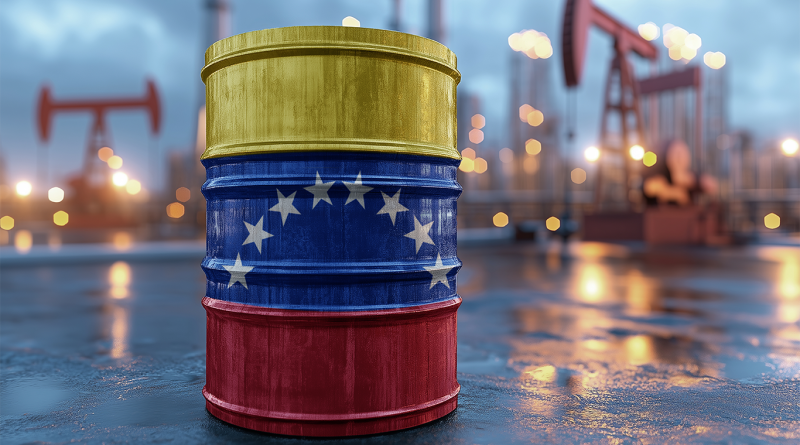Trump Imposes 25% Tariff on Countries Buying Venezuelan Oil
Subscribe to our free newsletter today to keep up-to-date with the latest energy, oil and gas news.
In a surprise campaign announcement that has rippled through global energy markets, former President Donald Trump said the United States will impose a 25% tariff on any nation that imports oil or gas from Venezuela. While sanctions on the Maduro regime are not new, this declaration marks a sharp escalation, shifting pressure from Venezuela itself to its international customers.
The timing is deliberate. With oil markets already strained by conflicts in Eastern Europe and the Middle East, this move repositions US energy policy as an offensive tool rather than a defensive reaction.
The tariff isn’t just symbolic. By threatening to penalize any nation engaging with Venezuela’s oil and gas sector, the US is effectively extending its jurisdiction into international trade lanes. It also sends a clear signal to adversaries and allies: under Trump, US economic policy would return to aggressive conditionality. Venezuela’s oil exports, though diminished from their peak two decades ago, still account for a significant portion of energy flows to China, India, and parts of Southeast Asia.
From a domestic standpoint, the announcement also serves as a campaign lever. Framing the decision as a fight against authoritarianism allows Trump to tap into his base’s appetite for strongman diplomacy while reinforcing a narrative of US economic self-interest.
Venezuela’s oil pipeline to the world: who’s buying and what’s at stake
Venezuela’s crude oil, once a pillar of South American prosperity, now serves as a lifeline for a sanctions-hit economy under Nicolás Maduro. While production volumes have dropped significantly since the Chávez era, the country remains a vital supplier for several large importers – most notably China and India.
China’s role is pivotal. Through a mix of direct purchases and debt repayment arrangements, Chinese state-owned firms have been absorbing Venezuelan crude for years. Much of it is rebranded and resold, often through routing methods that obscure its origin. If Trump’s tariff policy includes downstream enforcement, targeting third-party refiners and shippers, Chinese firms could face mounting pressure or increased costs.
India has also maintained oil ties with Venezuela, driven by pricing advantages and supply diversification goals. Indian refiners, already navigating a volatile procurement environment, could be forced to choose between political risk and economic necessity.
Beyond China and India, countries like Malaysia, Singapore, and even parts of Europe have engaged in limited Venezuelan energy trade, sometimes through diplomatic exceptions or state-sanctioned carve-outs. Trump’s proposed tariffs could now threaten those arrangements, turning previously tolerated behavior into financial risk zones.
The stakes are considerable. Venezuela earns nearly all of its foreign currency through oil and gas. With limited access to credit markets and a struggling domestic economy, energy exports are Maduro’s primary economic lever.
How global oil markets are responding to new US sanctions
The oil market’s initial response to Trump’s tariff announcement was swift. Brent crude, already on an upward trajectory due to supply concerns, briefly touched $91 a barrel before stabilizing in the high $80s. Trading volumes spiked in New York and London, driven by concerns over geopolitical escalation.
While enforcement details remain unclear, markets are pricing in the probability of reduced Venezuelan supply—or at least increased friction in delivery chains. That alone is enough to shift buying behavior. Asian refineries may begin sourcing alternative blends to hedge against exposure.
The volatility highlights how fragile global energy flows have become. With Russian price caps under stress, instability in the Red Sea, and uneven US shale production, a new disruption, even speculative, adds pressure to a tightly stretched system.
Long term, sustained pressure on Venezuelan exports could tighten an already constrained market. With OPEC+ cuts in place and global inventories below five-year averages, the introduction of new trade friction could amplify price volatility. Analysts are already revising second-quarter outlooks to reflect the added uncertainty.
The history of US energy sanctions
History shows that while sanctions can be disruptive, their outcomes are rarely clean.
Iran offers one example. Coordinated sanctions cut oil exports by millions of barrels per day between 2011 and 2019. Yet Tehran adapted through barter, shadow fleets, and new partnerships – especially with China. The pressure slowed revenues but did not deliver political change.
The post-2022 sanctions on Russia illustrate a similar pattern. Though Western measures targeted Russian crude, India, China, and Turkey filled the gap. Moscow redirected supply, built a shadow fleet, and maintained significant market share. Revenues dipped, but so did the influence of Western economic controls.
Venezuela has experienced this before. Since 2019, US sanctions have pushed the Maduro government to work around restrictions. Exports continued—via rerouting, bartering, and opaque financing structures. Production shrank, but didn’t collapse. The regime endured.
Trump’s tariff strategy carries high risks and uncertain rewards. Its core assumption is that pressure on international buyers will isolate the Maduro regime. But the economic and diplomatic realities suggest that outcome is far from assured. Governments that rely on Venezuelan imports to manage domestic fuel costs may resist compliance, even at the risk of US retaliation.
Sources:
